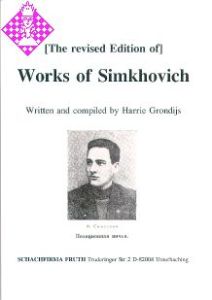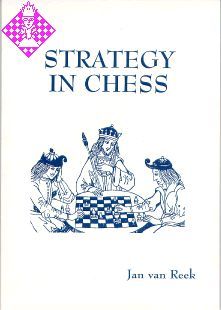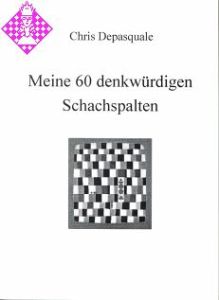PREFACE:
Theoretical innovation of positional play and strategy is the main subject of this book. The studious reader will become acquainted with the abstract principles of medium- and long-term-planning.
Great works by Euwe and Nimzowitsch made planning a major topic in chess books. Academic planning was less important to the Soviet school of chess. Extensive preparation of the openings and practical chess knowledge were more useful on the road to tournament successes. The term 'theory' was misused for opening casuistics. Some players even denied the importance of planning in chess. This is a one-sided statement like 'a coin has a head'.
The era, dominated by thorough openings preparation and accurate calculation, finds an abrupt end in June 1997, when Deeper Blue humbles Kasparov. A strong program on a fast computer remembers and calculates more accurately. The scientific approach triumphs. Positional play and strategy can also be studied scientifically. How long will the human application remain superior?
Book one presents the basics of positional play and different theories on strategy. Book two reviews the ideas of Euwe's and Nimzowitsch's predecessors. A scholarly reader will be fascinated by the historical development of strategic conceptions. Book three displays the origin of planning in chess. Important texts of Philidor are presented and discussed. The finale is a comparison of the roots with Nimzowitsch's views.
Theoretical innovation of positional play and strategy is the main subject of this book. The studious reader will become acquainted with the abstract principles of medium- and long-term-planning.
Great works by Euwe and Nimzowitsch made planning a major topic in chess books. Academic planning was less important to the Soviet school of chess. Extensive preparation of the openings and practical chess knowledge were more useful on the road to tournament successes. The term 'theory' was misused for opening casuistics. Some players even denied the importance of planning in chess. This is a one-sided statement like 'a coin has a head'.
The era, dominated by thorough openings preparation and accurate calculation, finds an abrupt end in June 1997, when Deeper Blue humbles Kasparov. A strong program on a fast computer remembers and calculates more accurately. The scientific approach triumphs. Positional play and strategy can also be studied scientifically. How long will the human application remain superior?
Book one presents the basics of positional play and different theories on strategy. Book two reviews the ideas of Euwe's and Nimzowitsch's predecessors. A scholarly reader will be fascinated by the historical development of strategic conceptions. Book three displays the origin of planning in chess. Important texts of Philidor are presented and discussed. The finale is a comparison of the roots with Nimzowitsch's views.
| EAN | 3980489698 |
|---|---|
| Weight | 170 g |
| Manufacturer | Fruth |
| Width | 14.6 cm |
| Height | 21 cm |
| Medium | Book |
| Year of Publication | 1997 |
| Author | Jan van Reek |
| Language | English |
| ISBN-10 | 3980489698 |
| Pages | 110 |
| Binding | paperback |
| Name | Fruth |
|---|
Contents
009 Book 1. Positional play and strategy
Introduction
011 Part 1. Positional play
012 I. Judgment and planning
016 II. Matter
immediate decision - slight material advantage
018 III. Strengths
passed pawns - strong pawn centre - pawn majority on the queenside - blockade
022 IV. Weaknesses
weak pawns - passive knight - bad bishop - weakened kingside
026 V. Control
open files and ranks - open diagonals - strong king - overprotection
030 VI. Time
tempi - zugzwang
032 VII. Pocket strategy
development sacrifice - positional sacrifice - prophylactic manoeuvre
036 Part 2. Strategy
038 I. Modern strategy
centralisation - attack on the queenside - attack on the kingside - encirclement
044 II. Hypermodern strategy
restraint - consolidation - mixed strategy
052 III. Post-modern strategy
056 Literature
057 Index of players
059 Book 2. Basic strategy in the endgame
Introduction
Theoretical scheme of Strategie elements
061 1. The relative value of chessmen
Lewis exploits the advantage of a pawn
063 2. Pawn pushing
Philidor: pawns are the very life of the game - Project, laid in the opening
065 3. Restraint
Philidor as predecessor - Restraint and blockade by Staunton
069 4. Number of tempi
A race between passed pawns - Direct Opposition -
Close combat by Anderssen - Distant combat by Morphy
072 5. Control
Paulsen: distant control by bishops and rooks -
Steinitz: a strong king
077 6. Consolidation
Paulsen protects his own territory
079 7. Exploiting weaknesses
Steinitz exploits weak pawns, lack of mobility and weak squares
084 8. Perfection
Technique by Tarrasch - Tactics by Lasker
086 Literature
087 Index of players
Book 3. Chess analysed
089 1. Parts from Chess analysed by Francois-André Danican Philidor
103 2. A comparison with Nimzowitsch's endgames
009 Book 1. Positional play and strategy
Introduction
011 Part 1. Positional play
012 I. Judgment and planning
016 II. Matter
immediate decision - slight material advantage
018 III. Strengths
passed pawns - strong pawn centre - pawn majority on the queenside - blockade
022 IV. Weaknesses
weak pawns - passive knight - bad bishop - weakened kingside
026 V. Control
open files and ranks - open diagonals - strong king - overprotection
030 VI. Time
tempi - zugzwang
032 VII. Pocket strategy
development sacrifice - positional sacrifice - prophylactic manoeuvre
036 Part 2. Strategy
038 I. Modern strategy
centralisation - attack on the queenside - attack on the kingside - encirclement
044 II. Hypermodern strategy
restraint - consolidation - mixed strategy
052 III. Post-modern strategy
056 Literature
057 Index of players
059 Book 2. Basic strategy in the endgame
Introduction
Theoretical scheme of Strategie elements
061 1. The relative value of chessmen
Lewis exploits the advantage of a pawn
063 2. Pawn pushing
Philidor: pawns are the very life of the game - Project, laid in the opening
065 3. Restraint
Philidor as predecessor - Restraint and blockade by Staunton
069 4. Number of tempi
A race between passed pawns - Direct Opposition -
Close combat by Anderssen - Distant combat by Morphy
072 5. Control
Paulsen: distant control by bishops and rooks -
Steinitz: a strong king
077 6. Consolidation
Paulsen protects his own territory
079 7. Exploiting weaknesses
Steinitz exploits weak pawns, lack of mobility and weak squares
084 8. Perfection
Technique by Tarrasch - Tactics by Lasker
086 Literature
087 Index of players
Book 3. Chess analysed
089 1. Parts from Chess analysed by Francois-André Danican Philidor
103 2. A comparison with Nimzowitsch's endgames
More from Fruth
-
 Works of Simkhovich€15.00
Works of Simkhovich€15.00


